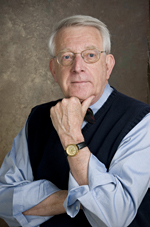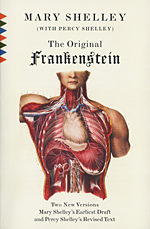

- Rozovsky wins prestigious NSF Early Career Award
- UD students meet alumni, experience 'closing bell' at NYSE
- Newark Police seek assistance in identifying suspects in robbery
- Rivlin says bipartisan budget action, stronger budget rules key to reversing debt
- Stink bugs shouldn't pose problem until late summer
- Gao to honor Placido Domingo in Washington performance
- Adopt-A-Highway project keeps Lewes road clean
- WVUD's Radiothon fundraiser runs April 1-10
- W.D. Snodgrass Symposium to honor Pulitzer winner
- New guide helps cancer patients manage symptoms
- UD in the News, March 25, 2011
- For the Record, March 25, 2011
- Public opinion expert discusses world views of U.S. in Global Agenda series
- Congressional delegation, dean laud Center for Community Research and Service program
- Center for Political Communication sets symposium on politics, entertainment
- Students work to raise funds, awareness of domestic violence
- Equestrian team wins regional championship in Western riding
- Markell, Harker stress importance of agriculture to Delaware's economy
- Carol A. Ammon MBA Case Competition winners announced
- Prof presents blood-clotting studies at Gordon Research Conference
- Sexual Assault Awareness Month events, programs announced
- Stay connected with Sea Grant, CEOE e-newsletter
- A message to UD regarding the tragedy in Japan
- More News >>
- March 31-May 14: REP stages Neil Simon's 'The Good Doctor'
- April 2: Newark plans annual 'wine and dine'
- April 5: Expert perspective on U.S. health care
- April 5: Comedian Ace Guillen to visit Scrounge
- April 6, May 4: School of Nursing sponsors research lecture series
- April 6-May 4: Confucius Institute presents Chinese Film Series on Wednesdays
- April 6: IPCC's Pachauri to discuss sustainable development in DENIN Dialogue Series
- April 7: 'WVUDstock' radiothon concert announced
- April 8: English Language Institute presents 'Arts in Translation'
- April 9: Green and Healthy Living Expo planned at The Bob
- April 9: Center for Political Communication to host Onion editor
- April 10: Alumni Easter Egg-stravaganza planned
- April 11: CDS session to focus on visual assistive technologies
- April 12: T.J. Stiles to speak at UDLA annual dinner
- April 15, 16: Annual UD push lawnmower tune-up scheduled
- April 15, 16: Master Players series presents iMusic 4, China Magpie
- April 15, 16: Delaware Symphony, UD chorus to perform Mahler work
- April 18: Former NFL Coach Bill Cowher featured in UD Speaks
- April 21-24: Sesame Street Live brings Elmo and friends to The Bob
- April 30: Save the date for Ag Day 2011 at UD
- April 30: Symposium to consider 'Frontiers at the Chemistry-Biology Interface'
- April 30-May 1: Relay for Life set at Delaware Field House
- May 4: Delaware Membrane Protein Symposium announced
- May 5: Northwestern University's Leon Keer to deliver Kerr lecture
- May 7: Women's volleyball team to host second annual Spring Fling
- Through May 3: SPPA announces speakers for 10th annual lecture series
- Through May 4: Global Agenda sees U.S. through others' eyes; World Bank president to speak
- Through May 4: 'Research on Race, Ethnicity, Culture' topic of series
- Through May 9: Black American Studies announces lecture series
- Through May 11: 'Challenges in Jewish Culture' lecture series announced
- Through May 11: Area Studies research featured in speaker series
- Through June 5: 'Andy Warhol: Behind the Camera' on view in Old College Gallery
- Through July 15: 'Bodyscapes' on view at Mechanical Hall Gallery
- More What's Happening >>
- UD calendar >>
- Middle States evaluation team on campus April 5
- Phipps named HR Liaison of the Quarter
- Senior wins iPad for participating in assessment study
- April 19: Procurement Services schedules information sessions
- UD Bookstore announces spring break hours
- HealthyU Wellness Program encourages employees to 'Step into Spring'
- April 8-29: Faculty roundtable series considers student engagement
- GRE is changing; learn more at April 15 info session
- April 30: UD Evening with Blue Rocks set for employees
- Morris Library to be open 24/7 during final exams
- More Campus FYI >>
2:44 p.m., Sept. 30, 2009----Since it first came to life in the imagination of an 18-year-old girl in 1816, to the latest paperback version edited by Charles Robinson, University of Delaware professor of English, Mary Shelley's Frankenstein continues to spark controversy as scholars debate her most famous creature and how it was created.
Published by Vintage Books, Robinson's The Original Frankenstein by Mary Shelley, with Percy Shelley, affords readers the opportunity to read two complete versions of the famous tale of science gone awry.
The first Frankenstein in this edition, intended for North American audiences, reflects the amendments and contributions of Mary Shelley's husband, the famous Romantic poet Percy Shelley. The second version, distinguished by the tinted paper on which it is printed, showcases Mary Shelley's solo voice with a minimum amount of editorial changes.
The Original Frankenstein, first published in hardcover in 2008 by the Bodleian Library at the University of Oxford, emanated from an examination by Robinson of Mary Shelley's first draft and a portion of the fair copy of the novel.
“The fair copy is a corrected copy in longhand that would be turned in to the publisher after all the corrections had been made,” Robinson said. “You really need to see the original to make the final declinations. You would not discover these things unless you worked with the manuscripts.”
In the book's introduction, Robinson notes that that while the novel was conceived and mainly written by Mary Shelley, Percy Shelley wrote about 4,000 to 5,000 words of the 72,000-word classic.
“While the corrected 1816-17 version by Mary and Percy italicizes the poet's hand in the work, the uncorrected text featured in The Original Frankenstein is instructive about the origins of Frankenstein,” Robinson said. “These italics used for Percy Shelley's words make even more visible the half-dozen or so places where, in his own voice, he made substantial additions to the 'draft' of Frankenstein.”
It is through these additions by Percy Shelley, Robinson writes in the book's introduction, that readers “deepen our understanding of the domestic, scientific and political issues in Volume I [1816-17] of the novel.”
Perhaps a victim of its overwhelming cultural success (about 9.3 million Google results alone), subsequent versions of Frankenstein on stage, film, television and voice recording over the next two centuries tended “to compromise or mute the voice behind the text as originally crafted in 1816-17,” Robinson said.
Even the creature, purposely unnamed in the original version, has long since assumed the name of his fictional creator Victor Frankenstein, at least in the popular imagination and in the vision of moviemakers.
While Mary Shelley's “hideous progeny” has taken on a life of its own, her literary star has continued to rise in the nearly two centuries since the original publication, Robinson said.
“Since then, there has been an increasing interest in Mary Shelley as an artist in her own right,” Robinson said. “Before, she was mostly seen as someone who could provide information on Romantic writers such as Byron, her father William Godwin, John Keats and her husband Percy Shelley.”
Examples of this increased interest in Mary Shelley as an artist include the 1995 Selected Letters of Mary Wollstonecraft Shelley, edited by the late Betty T. Bennett, and published by Johns Hopkins University Press, Robinson said.
“Since the 1970s, it seems that three or four books are published each year on Mary Shelley or Frankenstein,” Robinson said. “She has become a major figure associated with the Romantics.”
A Spanish version of Robinson's book, Frankenstein [by] Mary Wollstonecraft y Percy B. Shelley: El Manuscripto Original Descubierto en la Biblioteca Bodleiana (Madrid: Espasa Calpe, 2009), also has been released.
Robinson, who has taught Frankenstein since coming to UD in 1965, said reasons for the continuing popularity of the novel include the quality of the work itself, and the recovery and celebration of women writers.
“Mary Shelley might have been mentioned in the older literary anthologies, but her work was not represented,” Robinson said. “She is included in more recent college surveys, including the Longman Anthology of British Literature (2005).”
The Original Frankenstein also has garnered national and international attention, including a review by Louisa Thomas in the Sept. 14. issue of Newsweek.
In an article titled “Their Love is Alive,” Thomas notes that the identification of Percy Shelley's editorial contributions uncovered by Robinson tended to be both good and not so good, yet the poet ultimately collaborated on some of the “novel's most moving lines.”
Robinson's contributions as a Shelley scholar also were recently noted in an article by literary critic and scholar Harold Bloom in “Pilgrim to Eros,” an article which appeared in the Sept. 24 issue of The New York Review of Books.
“A good book on the subject, Charles Robinson's Shelley and Byron: The Snake and Eagle Wreathed in Fight (1976),” Bloom wrote, “is a helpful starting point in its chronicle of the mutual influences exchanged between the two poets throughout their six years of friendship, from the summer of 1816 in Geneva until Shelley's death by drowning on July 8, 1822, at the age of 39, in circumstances that have never been fully clarified.”
As mentioned in the acknowledgements section of The Original Frankenstein, Robinson cites the contributions by Bruce C. Barker-Benfield, senior assistant librarian at the Department of Special Collections and Western Manuscripts at the Bodleian Library at the University of Oxford.
Robinson also notes the influence of Donald H. Reiman, who as general editor of The Bodleian Shelley Manuscripts, made numerous Percy and Mary Shelley manuscripts available for scholarly research.
“Donald Reiman has also arranged with the Carl H. Pforzheimer Foundation that there be a funded research assistant here in the English department at UD,” Robinson said. “The research assistant serves as Reiman's assistant for his editing Shelley and His Circle (volumes that print manuscripts from the Carl H. Pforzheimer Library), now part of the New York Public Library in New York City.”
Credits also go to the University of Delaware's Department of English, the Center for International Studies and the Commission on the Status of Women, and to the UD Library, Robinson said.
“Over the past 40 years the UD Library has heavily invested in books and materials by and about the English Romantic writers,” Robinson said. “That very rich collection has made my research easier and better.”
Robinson, who will be delivering a lecture on Frankenstein at Columbia University on Oct. 29, also plans to do book signings at the UD Bookstore and at the Barnes and Noble Bookstore at 4801 Concord Pike, Wilmington.
Article by Jerry Rhodes


